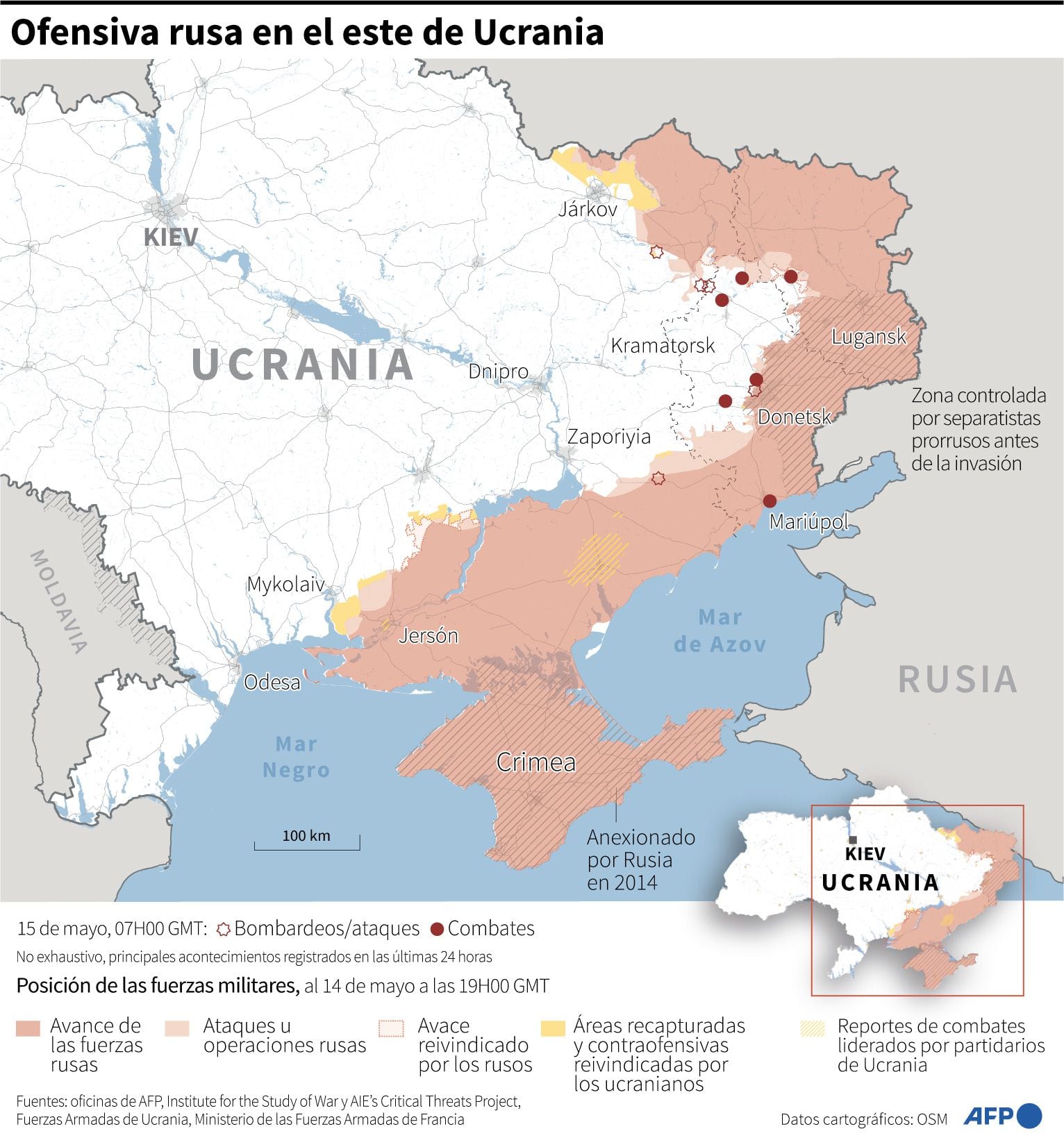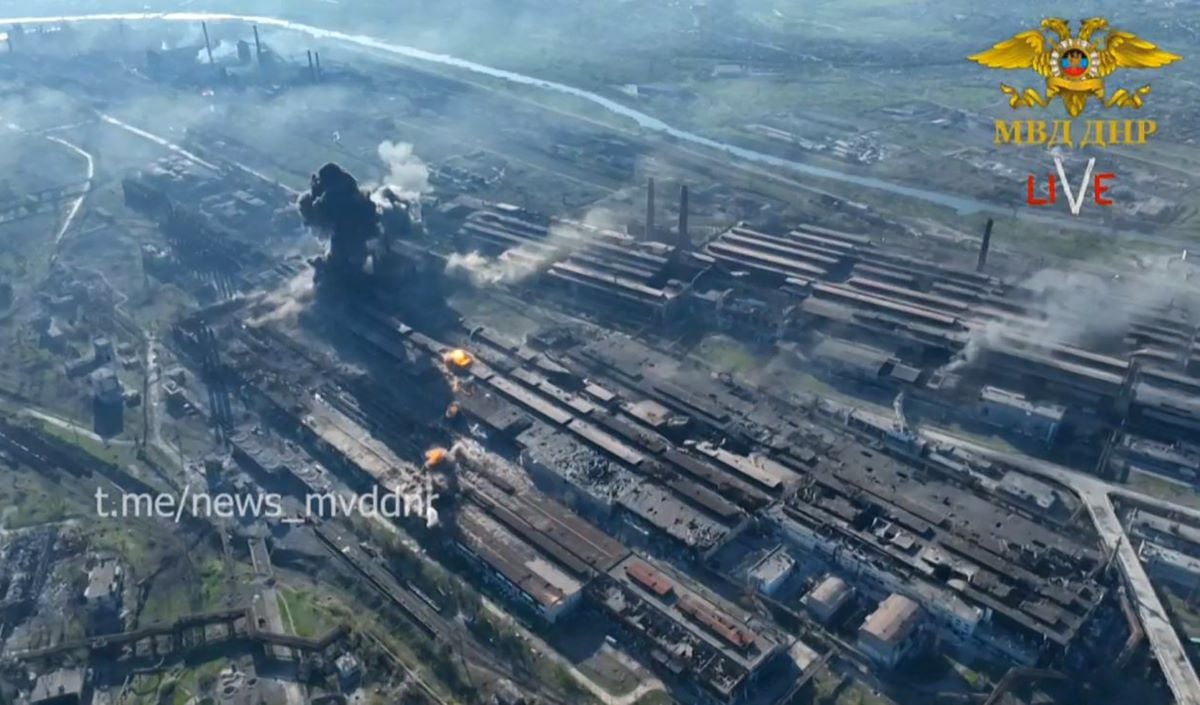The Russian ground offensive in Ukraine It is slowed down by the lack of troops and the successful Ukrainian counteroffensive and, according to British Intelligence, the Russian Army could have lost a third of the ground forces that penetrated into Ukrainian territory almost three months ago.
“To this day, Russia has suffered casualties amounting to probably a third of the ground troops that went into combat in February.”, reported the British Ministry of Defense on Twitter.
LOOK: “A historic day”: Finland officially announces that it will begin the process of accession to NATO
The General Staff of the Ukrainian Army reported on Saturday 27,200 casualties in the Russian ranks, to which must be added more than 4,000 tanks and armor destroyed or captured.
On the eve of the war, Russia concentrated more than 100,000 soldiers on the border with Ukraine and in the annexed Crimean peninsula, which does not include the crews of the twenty warships stationed off the Ukrainian coast or the planes that bombard the country.
THE OFFENSIVE IN THE DONBÁS IS DELAYED
“Despite initial small-scale gains, Russia has been unable to make any significant territorial gains over the last month,” says British military intelligence.
LOOK: War in Ukraine: Russia accused of using white phosphorous bombs at the Azovstal steel mill in Mariupol
For all this, he adds, the offensive on Donbas “has lost strength and is running far behind the set deadlines” when the Russian “special military operation” began on February 24.
Along the same lines, the general secretary of the NATOJens Stoltenberg assured that “The Russian war in Ukraine is not going according to Moscow’s plans. They failed to take kyiv. They are withdrawing from Kharkiv and their main offensive in Donbas is stalled.”
“Ukraine can win this war”, he stressed, while calling on allied countries to continue helping kyiv.
The Institute for the Study of War (ISW) points out that the destruction of a motorized brigade trying to cross the Severski Donets River has even provoked criticism from many Russian military experts and bloggers.
In his opinion, the images of numerous armored vehicles torn to pieces on both banks of the river show a profound lack of strategy and tactical sense on the part of the Russian generals.

THE FIGHT FOR IZIUM DOESN’T STOP
The ISW stresses that Russian forces have made no new attempts to advance and encircle Ukrainian strongholds in the region of Lugansk: Severodonetsk and Lisichansk.
The Russians intend to block Severodonetsk by cutting off road access from Zolote, 30 kilometers to the south, and later from Bakhmut (Donetsk).
However, the Ukrainian General Staff clarified in a statement that the enemy troops are regrouping and renewing their fuel and ammunition reserves to resume the offensive from the region of Kharkiv against the Sloviansk communications hub in Donetsk.
In fact, according to kyiv, both sides are fighting fiercely today in the Izium area, the Russian operations center in Kharkiv.
“We must do everything possible so that the enemy leaves the north of our region,” said Oleg Sinegubov, head of the Kharkov military administration.
The expulsion of Russian troops from that industrial region, according to the official, would allow kyiv to break the artery through which logistics circulate from Russian territory.
The Russians, for their part, cannot give up the supply lines between Izium and Vochansk to the north.which would be an irreparable setback in the face of the conquest of the donbas.
MORE US ARMAMENT PROMISES
Ukraine’s plan is to resist the final Russian offensive in Donbas until the promised western precision weaponry arrives necessary to balance the forces at the front.
To that end, Ukrainian Foreign Minister Dmitro Kuleba met in Brussels on Sunday with his American counterpart, Antony Blinken.
“More weapons and other help is already on the way for Ukraine”, Kuleba wrote on Twitter.
In addition, they also discussed how to unblock export channels for Ukrainian grain after kyiv accused Moscow of stealing part of the harvest.
“We have agreed to work closely to ensure that Ukrainian food exports reach consumers in Africa and Asia,” the minister added.

AZOVSTAL IS NOT TRADED
In turn, Turkey was willing to evacuate the last Ukrainian combatants who have been entrenched for weeks in the steel mill Azovstal of the port of Mariúpol, among which there would be half a thousand wounded.
In fact, a group of relatives of the fighters, mostly wives, traveled to Turkey to meet and request help from its Turkish president, Recep Tayyip Erdogan.
With everything, Russia’s chief negotiator, Vladimir Medinski, on Sunday ruled out the possibility that the fighters, members of the nationalist Azov battalion, are “the subject of a political negotiation.”
Medinski called them “war criminals” and considered the mere idea of their evacuation “blasphemous” in view of what happened with the Nazi invasion of the Soviet Union in 1941.
Although the Russian president, Vladimir Putinwho called members of Ukrainian neo-Nazi groups “bastards”, promised to stop the assault on the plant, the shelling around Azovstal is intense, according to kyiv.
As reported on Telegram by a councilor from the Ukrainian city of MariupolRussian soldiers used white phosphorus bombs in the fight for control of the city washed by the Sea of Azov.
The Ukrainian authorities had previously accused Russia of using white phosphorus bombs in the attack on Popasna.
Source: Elcomercio

:quality(75)/cloudfront-us-east-1.images.arcpublishing.com/elcomercio/BTFRBRBX4ZEBVJ7EFNHWLXFPVY.jpg)


:quality(75)/cloudfront-us-east-1.images.arcpublishing.com/elcomercio/EPAS3QJM7FFMXEWZCMK3VGVKPQ.jpg)
:quality(75)/cloudfront-us-east-1.images.arcpublishing.com/elcomercio/OJARSJKXE5F7LOP6YA3OXWBC6A.png)
:quality(75)/cloudfront-us-east-1.images.arcpublishing.com/elcomercio/EWKGXMRPDNC4ROA37QHEYP7D7M.jpg)
:quality(75)/cloudfront-us-east-1.images.arcpublishing.com/elcomercio/CWZVXJ5QHZDXHFY4B43EENW5ZU.jpg)
